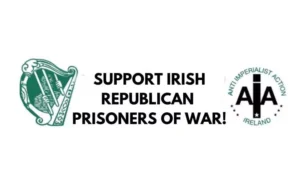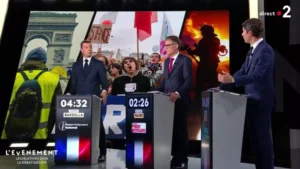
Chile: Ránquil Uprising, 1934 – Leaflet
We publish an unofficial translation of an article published in Prensa Chiripilko.
We bring to our readers the following leaflet prepared by Ediciones Leftraru and which we re-edit as a tribute on this 90th anniversary in commemoration of the glorious Ránquil Uprising, a fact that cannot be understood if it is not interpreted in light of Marxism-Leninism-Maoism. This is transcendental, since opportunism and reaction label the events as a “massacre” or “tragedy”, as well they deny or hide the communist participation which, precisely, was embodied by the most important and recognized leader of what is currently the highest event in the history of the class struggle of our country.
Juan Segundo Leiva Tapia
Uphold the red flag of the revolution
Presentation
This leaflet is a first approach to the biography of Juan Segundo Leiva Tapia, communist, professor, organizer of the poor Mapuche and Chilean peasantry. A revolutionary who led the Ránquil Uprising of 1934. This is the most important fact of the class-struggle of our people, in which the worker-peasant alliance is embodied on the path of the Democratic Revolution.
It is important to point out that the revisionist clique – false communists – that took over the leadership of the Communist Party of Chile (PCCh) since the mid-1930s and almost without counterweight at the end of the 1950s, spread a false story about the events of Ránquil, denying the leadership of the Communist Party (CP), and above all hiding those who embodied the red line within the CP and who fought for the Agrarian-Anti-Imperialist Revolution, a line that was precisely embodied by communists like Juan Leiva Tapia.
This is a first contribution on the path to know and understand this struggle, mainly so the current revolutionaries can learn from the struggle of workers and peasants, who did not hesitate to give their precious blood on this path, dedication that fills us with conviction and strength.
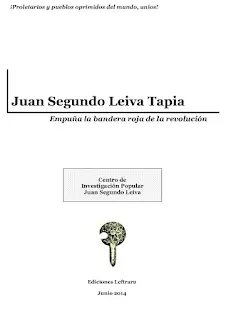
Origins
Juan Segundo Leiva Tapia was born on June 30, 1897, in the town of Chos Malal, province of Neuquén, Argentina. Years later he said: “But I am Chilean by blood and neighborhood.”
Since the boundary agreement with Argentina was signed in 1881 and the line of the highest peaks – of the Andes mountains – and the water border were defined as a border delimitation criterion, the Lonquimay valley was the only place which remained in Chilean territory, being located at the Eastern Andes. Afterwards, it was offered to the local inhabitants to choose which country they would be repatriated to. Between 1896 and 1898 in Chile, decrees were issued that installed the new settlers. It is in this context that Juan Leiva Tapia’s parents entered Chile in 1905, through the mountain cross-border of the Lonquimay valley, in Alto Bio-Bio. It is presumed that they died when he was still a child, leaving him in the care of Doña Candelaria Ramos, who he recognized as his legitimate mother. He married Valentina Muñóz Sáez, with whom he had two children, Renalda and Juan Lenín. In some historical sources the name Rubén appears instead of Renalda.

His studies
He moved to Santiago and in 1913 he started to study Spanish at the Pedagogical Institute of the University of Chile (today UMCE), being graduated in 1917, as can be seen in the registration books of the mentioned university. Elías Lafertte, secretary of the Chilean Workers’ Federation (Federación Obrera de Chile – FOCH) during the time of the events in Ránquil, comments in his memoirs that he was also a French-teacher, something he exemplifies with the conversations that Juan Leiva had with a French-teacher on a trip that Lafertte and Leiva did together and that we will tell later. Another testimony is the one from the grocery shop owner Harry Fahrenkrog, an employee of Bruno Ackerman, a German merchant who was part of the right wing of the Lonquimay Agrarian Union, and contemporary to the events, he relates about Juan Leiva: “When he was in his 2nd year [of studies of law], his restless spirit and his tendency towards rebellion led him to participate in a student strike, for which he was expelled from the University. He settled to the city of Victoria as a primary school teacher and at the same time defended cases in the courts (…). He continued to be active in the Communist Party, as he had already done during his time as a student.”
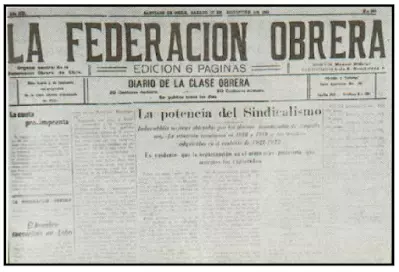
Lonquimay Agrarian Union
On April 30, 1928, Juan Leiva founded the Lonquimay Agrarian Union, remaining as General Secretary, which gives us an example of the recognition he had among the poor peasants and residents associated with the union, who lived constantly harassed by the ambitions of the big landlords to steal their land. It is said that in this work he was supported by the worker from Lota, Máximo Alarcón, who belonged to the FOCH, a classist workers’ organization lead by the CP. Juan Segundo Leiva was commissioned by the union to defend the most felt demands of the residents and their children in the Lonquimay valley summarized by the union in the slogan: Settle, produce, civilize! Leiva Tapia made the defense before many instances, even reaching the highest authority of the old State, the President of the Republic. This is how on November 20, 1928, Juan Leiva met with Carlos Ibáñez del Campo, lackey of Yankee imperialism that governed our country at that time. He promised to fulfill the union’s demands: land, credit for the purchase of livestock and schools. But it was impossible for Ibáñez del Campo, apprentice fascist to solve the land problem neither in Chile, nor in Lonquimay, since he served his masters of imperialism and the national ruling classes.
On this date in the local newspaper El Comercio de Curacautín, Leiva Tapia published articles as professor and union leader, where he denounced the abuses of the big landlords, the smuggling of livestock from Argentina, the constant attacks on the members of the union and he defended the union organization and the building of schools.
In 1929, in an interview for the local press where he spoke about the importance of peasant organization, he stated: “Beautiful day, not far away from when Chileans will enjoy our entire social, economic, political and administrative organization rests on the solid foundation of social organization!”
In July 1932, the Lonquimay Agrarian Union, as he wanted to defend the masses of Lonquimay’s just demands for the land and living conditions, he joined other local organizations in the area. Hence, he created the Curacautín Social Workers Council. And in this Juan Leiva is appointed general secretary of the newborn organization, which reflects the weight of the union and Leiva in the area.
Returning to Lafertte’s story, he pointed out that he met Juan Segundo Leiva at the FOCH Congress of February 1933 held at the Drivers’ Union on Cuming Street. He tells in his memoirs that among the attending provincial delegates: “Juan Segundo Leiva Tapia rose with impressive reliefs… although he dressed like his co-workers, riding boots, a short jacket and a Castilian blanket, he was a man with culture who argued admirably and spoke with logic and at the same time with passion… moved by the misery of the peasants. He had dedicated his life to them, to organizing them, to raise them and for this task he did what a fighter should do, he fully identified with the poor peasants, he became one of them.”
The second time he saw him was in this same year, at the meeting of the Anti-War Committee that took place at the Teachers’ Federation’s local, a classist organization of CP teachers. Juan Leiva was part of the delegation chosen to go to a Conference in Montevideo, Uruguay. Lafertte says that after the meeting he returned to Lonquimay and crossed the mountain range from the South, arriving at the CP headquarters in Buenos Aires, Argentina, where he met the rest of the delegation. All together arrived at the small town of El Carmelo on the Uruguayan shore of the Río de la Plata when they were arrested. Then he spent 20 days in the Montevideo prison and the deportation order was given. On 1st of May, 1933, when International Workers’ Day was commemorated, they were in a cell on an English ship that was bringing them to Chile. However, the prison did not prevent them from singing The Internationale and a Greek worker who was also detained on that ship joined the song. When they arrived to Punta Arenas, Juan Segundo Leiva was deported to the port of Melinka, in the Guaytecas Archipelago, currently belonging to the province of Aysén.
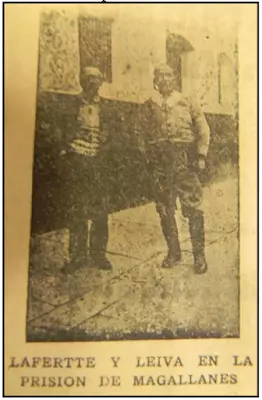
After 5 months, on November 1933, he came back to Curacautín and he was interviewed by the local newspaper as a peasant leader. After being imprisoned, he did not hesitate but the opposite, he explained his joining to the FOCH as follows: “The Lonquimay Agrarian Union joining the FOCH and my participation in the leadership is the fair and legit peasant-worker alliance to defend themselves from this two powerful allies who grips the working class of the city and the countryside: foreign capitalism (Yankee, English, Japanese, German, etc.) as well as the feudal bourgeois latifundium.” And he added: “The FOCH respects and will defend the interests of the peasant, the worker, the small residents and settlers, as well as the interests of the poor owner, medium owner and even the rich who manages and harvest his property if he is not an enemy of the economic transformation, or if he is not a feudal big landlord and wants to combat the organization of the working class from the city and the countryside. Moreover, the FOCH wishes unity and fraternity between workers and peasants to give the country its real independency, economic independence, freeing it from foreign imperialists, which in tied alliance with big landlords, suffocate all initiative and prosperity, boiling down the people to famine and slavery. Because of that we say loudly and clearly that the working-peasant union we promote is a national-liberation revolution.” And even though this interview raises this transformation might be without arms, he said: “All the colonization promoted by the governments of feudal bourgeois imperialism, being those liberal, conservative, pretending to be socialist but actually yellow, etc., will not be deceive for the working class. It is a mean to get the men quiet for a moment and continue exploiting him.” This interview expresses the discussions held within the International Communist Movement (ICM) and at the same time express the just and correct class position which guides the goals of Juan Leiva.
Break out of the Uprising
One year after, on the firsts months of 1934, the historical class antagonisms sharpened in Lonquimay. The big landlord oppression supported by the old State, which for decades was heavily falling on the shoulders of the poor Mapuche, Pehuenche [Translator’s note: Indigenous people from the Andes] and Chilean peasantry, workers and residents, exploded in Ránquil, in the Lonquimay area.
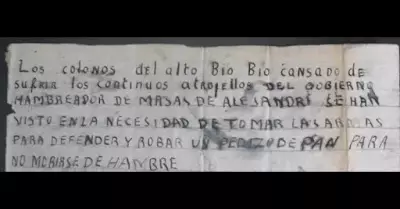
According to the National Archive, the Ránquil property was part of a latifundium called San Ignacio de Pemehue of around 132,000 hectares. By decree, was acknowledged as property of the Puelma Castillo family, being owners of 139,362 hectares located in the Alto Bio-Bio, including 4,000 hectares of lands free of taxes, which previously were handed over to settlers and peasants of the area.
All the efforts of the Lonquimay Agrarian Union, including the interview of Juan Leiva with the president, attempted to combat this waste which used legality in favor of wealthy people. But after being appointed president Arturo Alessandri, he deepened a policy in favor of the interests of big landlords as Puelma and Bunster. This is how the old State decreed to favor them handing over 30,000 hectares of lands without taxes. Additionally, this legal action was the basis for label the peasants of the area as ‘illegal occupiers’ of the lands, as well it was asked for the definitive eviction of them from these lands.
This was the last attack they could stand: the peasant masses raised in rebellion with old rifles, sticks and tools. Workers and toilers joined them as they were fed up with the misery they lived, seeing the men of the countryside as their own brothers.
In order to be able to lead the masses to struggle, Juan Leiva expelled those followers of the bureaucratic path within the Lonquimay Agrarian Union.
Finally, is on 27 June of 1934, when the peasant and working armed masses attacked the big landlords and bourgeoisie, and they faced repression by the old State, eliminating some police officers. The ruling classes crumbled of fear, pointing out that a “Soviet Rebellion” started in La Araucanía, among other adjectives. The war-cry which set the prairie on fire of the class-struggle from Ránquil was a danger for the big bourgeoisie and the big landlords.
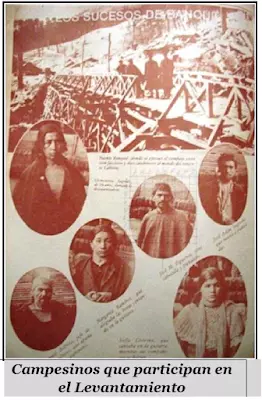
Juan Leiva Tapia led the uprising politically and militarily and he gave his life. It lasted several days, and even though the sources do not coincide on the numbers, hundreds of people joined the uprising. The skirmishes took place in several parts, as in Nitrito and the Bridge of Ránquil, where the heroic masses clashed with members of the military police who had the support of the Civil Guard of Lonquimay and Republican Militias organized by the government. The terror suffered by the ruling classes was so big, that for first time in history a plane was flying over the area of Alto Bio-Bio. Official figures counted 61 detained and 100 dead. Courts acquitted the genocidal police officers and military under an Amnesty Law and only the civilians were convicted.
The repression thirsty of blood identified since the first moment the leaders of the movement, unleashing all the wrath on them. Juan Leiva was killed close to Llanquén in the Lonquimay valley.
In a newspaper of the Regional Committee of International Red Aid, impulsed by the Communist International to defend the fighters, it is said: “Juan Leiva Tapia was found sleeping at his home, he was brutally whipped, he was tied to a horse and dragged while the horse was galloping across the Ránquil river, carrying him until the shore of the Llanquén, where he was brutally murdered, being tortured until he gave his last breath.”
Juan Segundo Leiva Tapia raised high the flag of the Agrarian Anti-Imperialist Revolution, as the ICM understood already in that moment, as the only emancipation path for semi-colonial and semi-feudal countries. At the same time the right opportunist line within the ICM defended to drag the Communist Parties to the classes collaboration path, by bringing them until the tendency towards the elections swamp, by the hand of the opportunist policy which manipulated the use of popular fronts. These opportunists brought the CP to collapse, bringing it to its knees before its enemies.
Juan Leiva was a revolutionary who – in the two lines struggle developing in the CP at that time – embodied by deeds the red line, by leading the masses to struggle, to the defense of the usurped rights of the peasants and workers. This defense was done with arms in their hands, against the latifundium, big bourgeoisie and imperialists.
Amid the 30’s, Juan Leiva Tapia acted as a part of this army of men and women which moved forward all over the world against fascism and oppression, yielding the red flags which with the Russian Revolution were molded and with the Chinese Revolution achieved the biggest triumph.
Without doubts, the class position, the passion, struggle, sacrifice, joy and anger which moved Leiva Tapia, nests in the heart and the head of the revolutionaries who everyday give their life to retake the path defined on 27 June, 1934, by the Ránquil combatants.
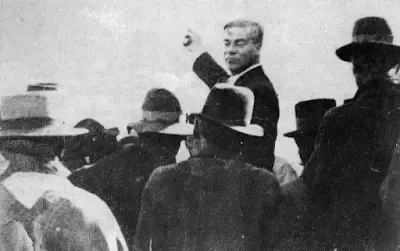
Luis Emilio Recabarren, founder of the Communist Party of Chile
Long Live the 90 years of the Ránquil Uprising!
Retake Recabarren, reconstitute his Party and develop the Ránquil path!
Down with opportunism, revisionism and imperialism!
It is right to rebel!
